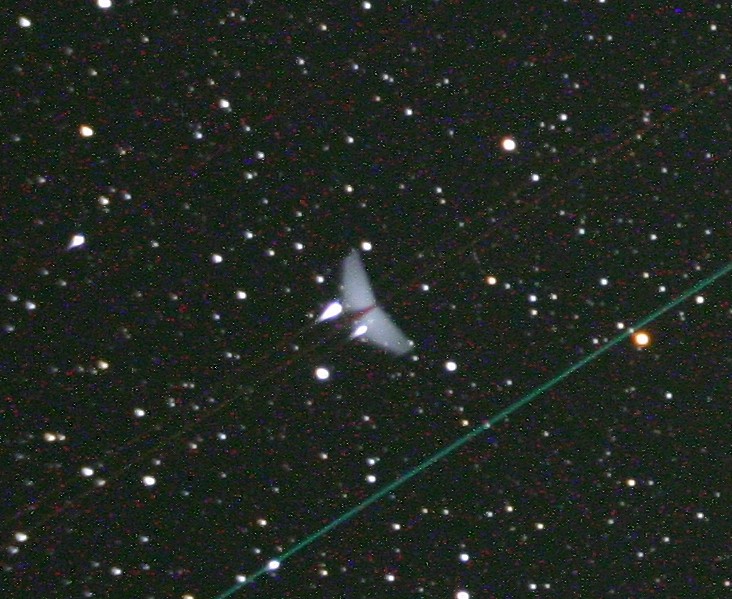
|
|
|
One of the ways you can tell the difference between
a satellite passing overhead and a commercial airliner is that the
airplane blinks. That's what happened here. The strobe effect of the
blinking navigation light flash freezes the image of the tail section. The
500 sec exposure means the light from the stars accumulates enough to show
through the tail, sort of like a double exposure. Just like on boats,
there is a red light on one side (wingtip) and a green light on the other,
and they don't blink. In this photo you can see the green light best, but
that's because the plane was flying level but I was taking a picture of it
at an angle, so the green light was facing more directly toward me. If the
plane had been flying directly overhead, both lights would have been about
the same. The plane was probably about 8-10 miles distant, the image full
image was about 45-50x zoom. One fellow tells me that with a little digital development he could make out the tail ID?! My digital development is pretty primitive, but I guess that shows how much I have yet to learn to get the most out of these photos. I've spent many hours photographing celestial phenomena, and have many examples of satellite and meteor traces, but this was the first time I caught an airliner like this. It took me a while to figure it out. |